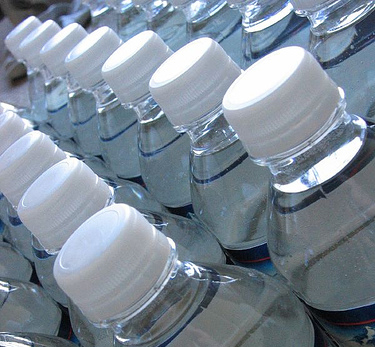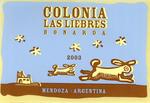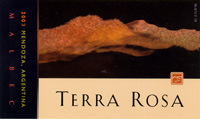Dr Vino's wine blog
wine talk that goes down easy
In Wine & Spirits talking about wine’s carbon footprint
Welcome readers of the Wine & Spirits magazine! If you’re looking for some bullet points and discussion of my research with Pablo Paster on wine’s carbon footprint, check here. Consider subscribing to the site feed or the monthly email updates on the right sidebar.
And if you haven’t seen the issue that is hitting mailboxes and newsstands now (but not the web), check out the Syrah extravaganza issue with reporting and reviews from Australia, the US (Santa Cruz), Chile and France. There’s also an interview on the back page that I did with editor and publisher Josh Greene.
While some of it covers familiar ground to blog readers, there’s some new material and great art (I wasn’t Simpsonized)! And I also make a proposal for later in the year: because air freight has such a big effect on a bottle’s carbon footprint and much Beaujolais nouveau is sent around the world by plane, how about saying no to nouveau and making the third Thursday of November a global celebration of local wine? Hit the comments with your initial thoughts on this idea. We’ll come back to it later in the year.
One point of clarification: the story ran a chart from our paper that reflects the various amounts of carbon dioxide emissions for bottles from different places. Napa looks horrible with even more than Australia! What was reflected in the text of the paper but didn’t make it into the chart in this story is that all the bottles were being sent to Chicago via differing modes of transport. The Napa one was sent sent by air. Sending it by truck would bring it down slightly below the CO2 emissions of the French bottle.
Carbon neutral: keep wine, ditch water

I’m giving up water for 30 days. Bottled water that is.
In the discussion of the carbon footprint of wine here last week, I floated the idea of purchasing carbon offsets to assuage carbon guilt. In case I had any doubt of the efficacy of this matter, an excellent column in the Financial Times last week on the subject of offsets made me put paid to this notion.
A hilarious quote compared the system of carbon offsets to “the medieval system of indulgences, in which corrupt priests absolved sins for haggled fees.” The author, John Guthrie, went on to say that the practice of buying tracts of forest land for protection as offsets may be out of favor now. The band Coldplay bought 10,000 mango trees in southern India to offset the carbon produced by the release of their second album. Five years later, the trees have now withered and died.
So if I am to make my wine drinking carbon neutral, I can’t buy my way out of it: I actually have to give something up. I figure I should go beverage-for-beverage, in other words, keep wine, and give up something else. I’d love to say that I would give up soda, but since I haven’t had a soda in something like 15 years, that would kind of be like my giving up snowmobiling, jet-skiing, and being driven to work in a stretch Hummer limousine (oh wait, that last one actually WILL be tough to give up).
Because the kind of wine that I enjoy is a unique product that can’t be replaced locally, I have another target in my sights that can: bottled water. It’s one of those paradoxes of the global era to be able to buy spring water from the French alps or the islands of Fiji in New York when there is abundant drinkable tap water available (unlike some countries, the efforts of a current UNICEF campaign). And, as a commenter pointed out in a previous posting, this chart shows that bottled water’s growth rate is faster than wine–it must be stopped!
So for 30 days I’m not going to consume any bottled water. Just what kind of a sacrifice will that be? Granted, not a huge one. I might save the world something like 30 bottles of water. But it’s a start. And I may even extend it if I can live without my favorite Gerolsteiner. So if you’ll excuse me, I have to go and fill up my water bottle at the drinking fountain.
(image)
Nine wines under $10
The hardest thing—but perhaps more sought-after than a Lafite—is a list of good, interesting and affordable wines, for parties or for dinner Sunday to Thursday or even all week long. Here’s my latest list, arranged not by preference, but by style, from lightest to fullest in white and red.
Why is it only a list of nine wines under $10 instead of the usual ten under ten? Because I’m grumpy. It’s increasingly difficult to find good wines with character under ten dollars. Blame part of it on the weak dollar (though my list here is heavy on eurozone wines), blame it on producer greed–they’re all just excuses! Good wines, easy on the palate and on the wallet are what consumers want. Sure, there are lots of great wines for $12-$15 and many more from $15 – 20, but these are out of reach for a lot of people to have with dinner on a given Tuesday. Producers take note of this market opening, ready to be filled! Meanwhile, we can fill up our wine storage areas with this value vino.
Whites
 Muscadet Sur Lie, Hautes Noelles. $9.99 (find this wine)
Muscadet Sur Lie, Hautes Noelles. $9.99 (find this wine)
This muscadet is great for oysters. Don’t you get tired of people saying that? I do. I have oysters once every five years and this wine is too good to wait that long between bottles. The “sur lie” aging gives this muscadet a richer mouthfeel but it still has the characteristic crsip acidity, faint melon note, and gentle briney quality. Fire it up with grilled seafood on the deck. (Importer: H2Vino, Michael Skurnik)
Vina Sila, Naia, Verdejo, Rueda (Spain), 2005. $10 (find this wine)
This is a classic summer wine from a grape you may never have heard of: verdejo. Fresh citrus notes, though not as much acidity as a kiwi sauvignon blanc, notes of honeysuckle and white flowers make this wine a great one as a warm-up (with light, salty appetizers) or as a cool down (poolside).
Creta Olympias, Vilana, Crete 2006, $10. (find this wine)
Vilana is usually a ho-hum wine that is churned out from the most recent vintage. However, in a recent tasting of this off-the beaten-path variety, I found a few that were recommendable with this being the most affordable. With delicate white flower aromas, the wine had a certain lush mouthfeel, with pleasant minerally verve. This wine + Greek salad + outside under umbrella on a sunny day = life is good.
Rosé
Domaine Houchart, Cotes de Provence rose, 2006, $9. (find this wine)
This dark, vibrant, and dry rose has notes of strawberry and watermelon. The lively acidity makes it a great food pairing. While I think that rosé should be less than $10 a bottle to be lots of fun I might be tempted to pay $12 for the Domaine Sorin. But this blend of Grenache, Syrah, Cinsault, Cabernet Sauvignon, Mourvèdre gets the job done on the deck in the summer.
Reds
 Bodegas las Hormigas, Colonia las Liebres, bonarda, Mendoza (Argentina). 2006. $4.49 (find this wine)
Bodegas las Hormigas, Colonia las Liebres, bonarda, Mendoza (Argentina). 2006. $4.49 (find this wine)
This ridiculously priced bargain is one to buy with both hands. This surprisingly light and lively, unfiltered old-vine bonarda from importer Marco de Grazia’s project in Mendoza. It’s now our house burrito wine.
 Terra Rosa, Malbec Mendoza (Argentina), 2004. $10 (find this wine)
Terra Rosa, Malbec Mendoza (Argentina), 2004. $10 (find this wine)
This is a fascinating wine of the global era: Patrick Campbell of Sonoma buys the fruit from local growers in Mendoza, makes the wine on location, then ships it back to California for bottling and an admirably reduced carbon footprint. The cost-savings results in a wine of character, with good fruit and a pleasant and unusual level of acidity, at a very reasonable price. It calls out for grilled meat.
Castaño, Hécula, monastrell, Yecla (Spain), 2004 $9. (find this wine)
I poured this wine recently at a tasting and people thought it was a $30 wine. It has the wonderful mourvedre game quality on the nose, and serious but not aggressive tannins on the finish. I actually came across a bottle of the 2001 of this wine in the Dr. Vino Cellar recently (originally purchased for $7—inflation!) and it was among the most rewarding $7 bottles of wine I have ever had. I’ll throw some more of this one in the cellar and check back in a few years. Try it now with game or sausage.
Castillo de Jumilla, monastrell, Yecla (Spain). 2006. $9. (find this wine)
Given what I just wrote about how I feel about young monastrell, I wasn’t planning on being wowed by this freshly squeezed 06. But I was. It’s a gobs-of-fruit, beef-drippings kind of wine but with a pleasing lushness. According to the wine’s importer, there are only a few hundred cases of this excellent BBQ companion wine available.
Trentadue, Old Patch Red, Sonoma, 2004, $8. (find this wine)
California Zinfandel has sadly seen prices escalate: consider this one greed relief. Fans of big reds will find this a gulpable bargain with hints of dark fruits and faint spice. The biggest plus here is that—unlike some of the other wines on this list—the wine has broader availability.




